
The Book
Temporal Anomalies in Time Travel Movies
presents
Temporal Anomalies Index 2014
As explained previously in Temporal Anomalies Classics, the useful and oft-linked index to the years of Examiner articles was lost; although it has been restored, the process of reproducing those articles for backup seemed advisable. This is the sixth of a series of indexing articles, each expected to cover articles in series begun during a particular calendar year: 2009, 2010, 2011, 2012, and 2013 already posted. 2014 began with The Philadelphia Experiment, followed by Time After Time, Timecop, The Philadelphia Experiment II, About Time, Free Birds, X-Men: Days of Future Past, Edge of Tomorrow, and Mr. Peabody & Sherman. This index was delayed due to technical difficulties that extended the last of those series well into the new year, but is now complete.
As explained, this series of indices was started when it became temporarily impossible to maintain this web site and seemed advisable to provide links to early Examiner articles for ease of access. That in turn became problematic, and we have since determined instead to move all that material here to M. J. Young Net, and hopefully to support it by reader contributions through Patreon and other means.
Miscellany
This year again included several articles which were not time travel analyses but related to time travel movies in other ways, including:
The Philadelphia Experiment
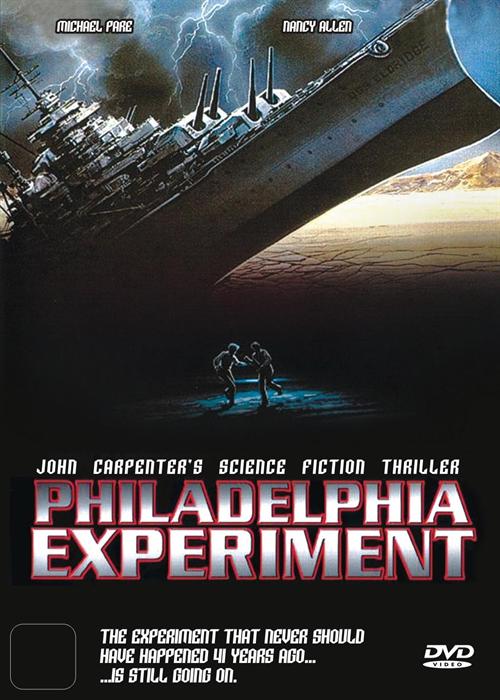
1984 was a good year for time travel. Terminator debuted, and Back to the Future and Star Trek IV: The Voyage Home were only a year away, with more good movies the year after that. Amidst all this was an improbable gem, a film about two experiments forty years apart both of which went horribly wrong and created a connection with each other. It plays well as a fixed time story, but also can work as a replacement theory story. Although it looks complicated, it was not that difficult to analyze--just a bit unexpected in places:
-
The Story: gives all the details relevant to the time travel aspects of the film.
-
The Vortex: attempts to make sense of the phenomenon which is the means of time travel.
-
The Tower: looks at the problem of how the tower, which landed in the future, got separated from the ship, which stayed in the past.
-
History: recreates the events of the history in which the time traveler did not come from the future.
-
Jimmy: looks at the disappearance of the one crewman and his presence on his ranch in the future.
-
The Alternative: considers the alternate version of history, in which the ship reappears on its own, creating another anomaly.
-
Rewrite: examines how the story falls into place once the time traveler does what he must do.
-
What if?: addresses possible alternatives to the analysis as presented.
-
Complication: finds another problem with another look at the vortex itself.
The sequel will follows below; it was a terrible disappointment.
Time After Time
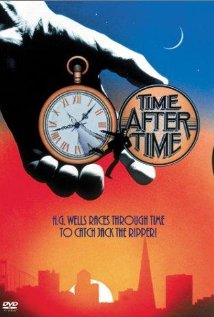
It was a clever idea for a time travel movie: what if (as we see in the 1960's H. G. Wells' The Time Machine) H. G. Wells himself built a time machine? To make it interesting, what if one of his friends was secretly Jack the Ripper, and used that time machine to escape to our time--to be followed by Wells, giving us two men out of time, one of whom is intent on capturing the other, who has become the latest modern serial killer? Malcolm McDowell and Mary Steenbergen would each make another time travel movie (his Star Trek Generations, hers Back to the Future part III), but here they do an excellent job as Wells and his somewhat ditzy but very modern love interest. How, though, does it do as a time travel story? It is not without problems:
-
The Story: with spoilers, gives us the setup of the story.
-
The Machine: looks at some inconsistencies in how time travel appears to work.
-
Recall: gives us the shape of our original history, when Stevenson vanishes into the future and the machine does not return.
-
Skipping: asks what happens when Wells removes himself from time before becoming famous.
-
Rushing: notes the oddity that Wells hurries to catch up with Stevenson when, duh, he has a time machine.
-
Complication: creates a missing timeline based on what is known of the other histories.
-
Victim: looks at the short hop to Saturday night, the discovered newspaper, and the very odd thing Wells says to Amy.
-
Victims: attempts to reconstruct what the paper must have said in the original version.
-
Marriages: looks at the genetic problem created when Amy travels to the past with Wells.
-
Books: comes to the final, and perhaps biggest, problem, whether any of this impacted his writing.
-
Saturday: addresses the odd problem that Wells travels to a date beyond his date of return, creating a complication that the day he visits does not exist until he makes the return trip.
-
Disassembled: raises the question of what happens if Wells dismantles the time machine, which is his expressed intention before he leaves 1979 for 1893.
It might work as a fixed time theory film, but even here there's a problem.
TimeCop
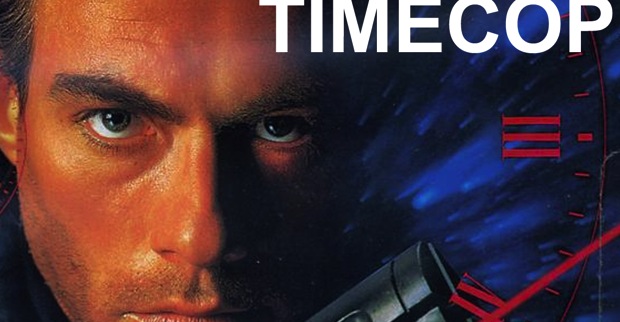
This film bothered me from the moment I saw it--a disaster wrapped in a disaster. I did not expect I would ever tackle it, and nearly said as much. But I saw a copy at a good price, and people did ask about it periodically, so I decided it would be worth discussing. I did not, I think, expect it would be as complicated as this, but then, I also did not expect to be able to get it all covered so succinctly, either.
-
Beginnings: gives the essential overview.
-
Gold: looks at problems related to the robbery of the Confederacy.
-
Decade: talks about what did and did not happen in the ten years we skip.
-
Detection: considers the difficulties involved in detecting trips to the past, and why the system as described can't work.
-
Recall: remembers the problems with recall devices like this, as used also in Timeline.
-
Crash: finds problems with the Lyle Atwood case and its resolution.
-
Cash: finds more problems involving Atwood and McCord.
-
Co-location: nonsense about the same matter in the same space.
-
Location: the issue of where Walker lives in the original history, and under what circumstances he lives in the apartment.
-
Parker: covers the timelines involved in the Parker McComb partnership problem.
-
Melissa: the death of Melissa tells us something about the time travelers coming from the future that is neither obvious nor logical.
-
Scar: call it a temporal continuity error, but the scar on McCord's face doesn't seem to be there when it should be.
-
Actress: wondering why Melissa is able to reproduce perfectly a scene completely unknown to her after a serious upset.
-
Risk: presents the fundamental danger of a trip to the past intending to kill someone in the past because they are a problem in the future.
-
Vanishing: raises the question of whether McCord is right in saying that the death of the young Walker would mean the disappearance of his older self.
-
Exploded: wraps up the final history into the final disaster.
So put it down to a good excuse to watch Jean-Claude Van Damme in action, and an interesting exploration of some time travel issues, but not a great time travel film.
The Philadelphia Experiment II
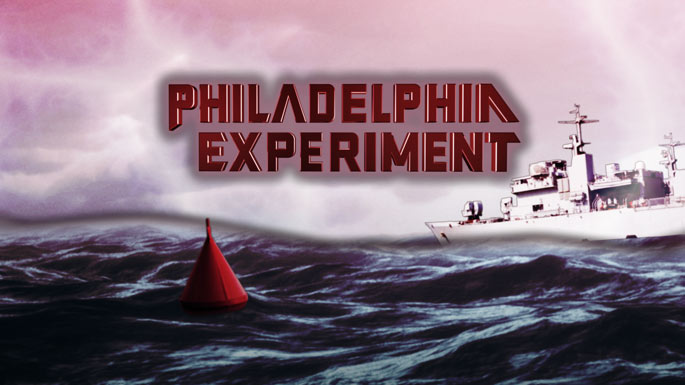
Having run out of excuses to delay the analysis of this disappointing sequel to The Philadelphia Experiment, I present an analysis of its multiple disasters:
-
Background: connects the new film to the old, and so fills in the details of the original history.
-
Change: gives us the history which replaces the original when (American) Mailer accidentally sends a stealth bomber to the 1943 German Luftwaffe.
-
L...oops: finds two serious flaws arising in the established premises of the film.
-
Dave: discusses whether there is any way for Dave Herdeg to be in this universe, dismissing most of the options.
-
Dates: explains why Longstreet's reasoning on Herdeg's arrival date should not make sense to him, and even more does not make sense to us.
-
Vortex: looks at why the (German) Mailer's time machine is different in kind from the other experiments.
-
Place: expresses confusion over why Herdeg arrives where he arrives, with what he has, and where he might have arrived instead.
-
Trips: addresses the problem of whether Herdeg and German Mailer travel back to 1943 as one trip to the past or as two separate trips, and the rationale and consequences of each view.
-
Unborn: asks whether it is at all logical for Mailer to dissolve when Mahler is killed, and why that does not happen to the bomber also.
-
Mahler: recognizes that the death of Mahler gives us a very complicated collection of four histories, each of which causes the next in sequence.
-
Jess: faces the genetic issue, brought into stark relief when we see Jess, the infertile freedom fighter against the NAZI empire, as a Little League Mom in the final history.
I hope you didn't waste good money on this movie; of course, I did, but then, I had to in order to tell you how bad it really is.
About Time
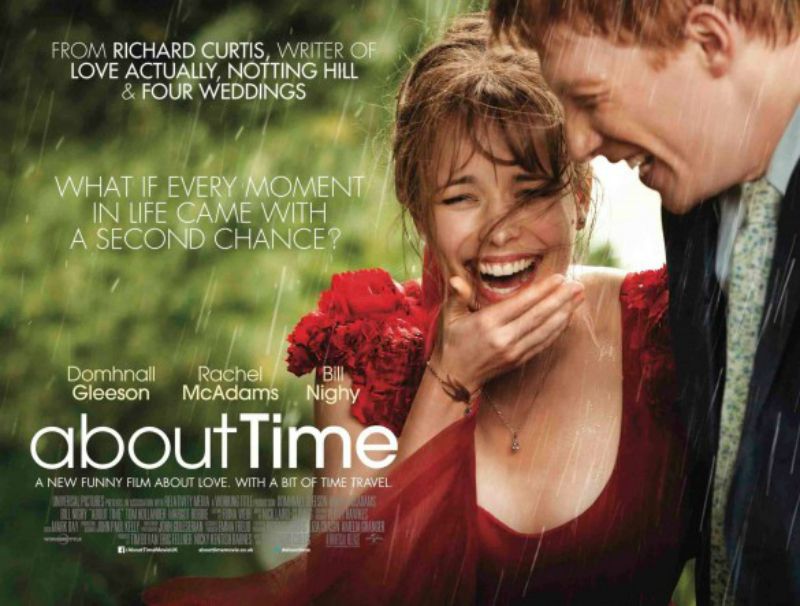
This one was in the theatre in November 2013, and we touched on it then, and then did a quick temporal survey based on notes from the show in January. We have returned to it with a more complete look at this enjoyable but temporally complex and frustrating film.
-
Background: assumes you have read the previous articles and lays the groundwork for the time travel elements.
-
Unembarrassed: examines the first trip Tim makes to the past, attempting to determine the rules that govern time travel in the film.
-
Memories: raises the issue of what happens to the memories of the "other Tim", who lived through the events created by this version.
-
Lotion: looks at the second trip to the past, and finds that there is a new rule, and one of the first rules has been broken.
-
Charlotte: finds a significant problem with Tim's attitude toward the changes he has made and how they might impact his own future.
-
Drama: covers a lot of ground, including the first first meeting with Mary and the problems with the play that cause him to undo that tryst.
-
Rupert: hits the second and third first meetings with Mary, as Tim discovers that the girl that slipped away has fallen in love with someone else, so he changes her life to put himself back in her favor.
-
Repeat: considers the problem created when Tim returns to change actions in the past he has already changed in the past.
-
Meeting: looks at Tim's effort to avoid Charlotte, and his proposal to Mary--with questions about how even with time travel he managed to put together what he needed for that.
-
Wedding: covers the changes in Best Man, and wonders how Tim knows that Dad went back and redid his toast.
-
Kit: looks at the trips by which Tim attempts to fix his sister's life.
-
Posy: looks at the genetic problem the film demonstrates, and the extent to which it fails to apply the concept fully.
-
Undone: tackles the issue of how to undo a trip to the past when the trip to the past no longer needs to be made to have its effect.
-
Prevention: continues the issue of trying to undo a trip, and finds that what Tim does is inconsistent with the rest of the film.
-
Reading: what Dad does doesn't work the way we might anticipate, which Tim's trips to visit his father after the funeral illustrate.
-
Interaction: what would happen if two time travelers make trips if one of them undoes the other?
-
Childhood: notes the risk involved in the final trip to the past, which goes further than Tim had ever gone yet apparently did not change anything of consequence.
It is indeed a temporal disaster, not sticking with a consistent set of rules, but it is still an enjoyable movie.
Free Birds
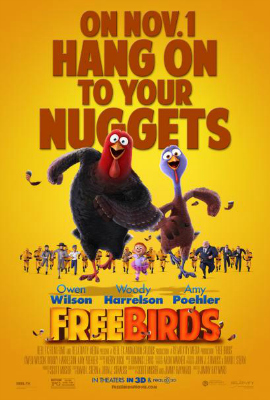
This one was also in the theatre in November 2013, and we touched on it then, with a quick temporal survey in December. It is not at all a serious movie, but it is a time travel romp, so here is our more detailed analysis.
-
Problems: building on the previous articles, gives an overview of the major problems which are immediately apparent.
-
Starters: finds a plausible solution for the predestination paradox initiated by the Great Turkey.
-
The Knob: finds a way for Reggie and the doorknob to become part of the paradox.
-
Hiccough: addresses the problem involved in Reggie replacing the original Great Turkey.
-
Visitors: attempts to explain how Reggie could have visited himself from the future.
-
Endings: studies the major problems created by Reggie's final trip to the past.
-
Coda: speculates on the impact of Jake's final return to the past.
It was a fun movie, and suitable for kids, but not particularly high on the list of great time travel stories.
X-Men: Days of Future Past

We first mentioned this film in November (2013), when writing about films showing then, as the trailer was running. We mentioned it again in a list of upcoming time travel films back in February, and in July gave a quick temporal survey. There's not much to examine here, but it does present some interesting problems.
-
Loops: recognizes the immediate and obvious problem that occurs when someone successfully alters the past, eliminating his actions.
-
Practice: discusses the hidden problem with the time travel method, in the fact that no matter how many times it has been done, it has never been done before.
-
Genes: raises questions of science and history in whether the premise of a targeting system that can detect a supposed mutant gene has any credibility.
-
Paralleling: looks at the complication involved in the notion that the future and the past both continue as long as the time traveler is in the past.
-
Disruption: tries to come to grips with what happens when Wolverine, as time traveler, begins to lose touch with the past.
-
Xavier: finds several problems in the idea that the young Xavier resolves his problems by contacting his older self through Wolverine's mind.
-
Memories: concludes with the perennial problem of who remembers what when history has been altered.
Since a reader asked, I'll state that I do not think you have to have seen previous X-Men movies to be able to follow this one, although it might help to know who the characters are. It is an exciting film, despite its flaws.
Edge of Tomorrow
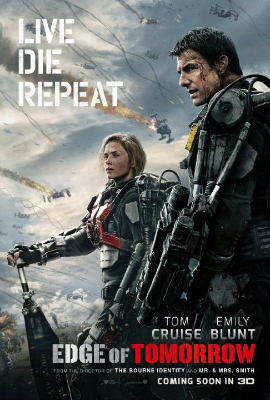
I had thought I would be analyzing this movie from an audio recording I made when I caught it in the theatre in June (2014), having made you aware of it as among this year's upcoming time travel films in February (2014), and doing a quick one-shot look at it in September from that viewing. Fortuitously, a small amount of money fell into my hands, and I was able to acquire the DVD of this and the next, and hopefully there will be money for one after that.
-
Introduction: explains how the time travel gets started.
-
Mechanism: presents the film's pseudo-rational explanation for why the time travel happens.
-
Blood: finds a problem with the concept that the infected blood causes the time travel, and proposes a solution.
-
Day: examines the concept that the Omega "resets the day", and what explanation that might have.
-
Muscles: considers the problem with training in the concept of muscle memory, that what Cage practices one day he has not practiced before on the next.
-
Memories: addresses the complication created by the fact that Cage does not send his memories back at the right moment, and indeed in the last run does not ever send them back at all.
-
Finale: looks at the final reset ending the film, and in attempting to make sense of it finds that the situation has another major temporal wrinkle.
It was an enjoyable action film with an interesting time travel element--doubtful but not impossible given a few assumptions.
Mr. Peabody & Sherman

It is a ridiculous cartoon movie and as such gives as many problems, of which the temporal ones are of some interest. The series attempts to unravel these.
-
Outline: gives us a basic sketch of the story which introduces some of its problems.
-
Previously: considers the problem that many earlier trips are suggested, and deals with the issue of whether the Tower of Pisa might once not have been leaning.
-
Priors: continues to address the previous journeys we do not see in detail, with particular attention to the impact the time travelers might have had on van Gogh and Shakespeare.
-
France: examines the first trip we see in its entirety, as Peabody introduces Sherman to the decadence of Marie Antoinette's court and inadvertently stays into the French Revolution and the Reign of Terror before escaping.
-
Penny: considers the problems created when Sherman takes her first to meet Washington and then to become lost in ancient Egypt, and he returns to the present to enlist Peabody's aid.
-
Egypt: rescues Penny and takes the trio to the Italian Renaissance and Leonardo da Vinci, where they again cause potentially serious problems.
-
Black hole: discusses the next interruption in their journey and takes them back to Troy.
-
Troy: briefly considers the potential problems of their visit there and starts dealing with the final events of the film as Sherman and Penny leave Peabody in the past and head for the future to ask Peabody to help them rescue himself.
-
Duplicated: covers the issues related to meeting your own temporal doppelganger, and the first level of problems this should have created.
-
Fused: looks at what the movie suggests would happen if you touched your temporal doppelganger, why that is ridiculous, what disaster it would create if it did happen, and what should have occurred.
-
Rift: studies the impact of a temporal disaster in which persons are being pulled out of their rightful places in the past and dumped in the future.
-
Snap: critiques the nonsensical solution that is supposed to fix the rift by traveling to the future.
-
Restoration: discusses the problems and potential problems with the influence of the future on the past as seen in the ending.
That completes the index through 2014; articles continue to be published, with 2015 expected to include Predestination and to restore articles from the old site including the Back to the Future series already underweigh.












